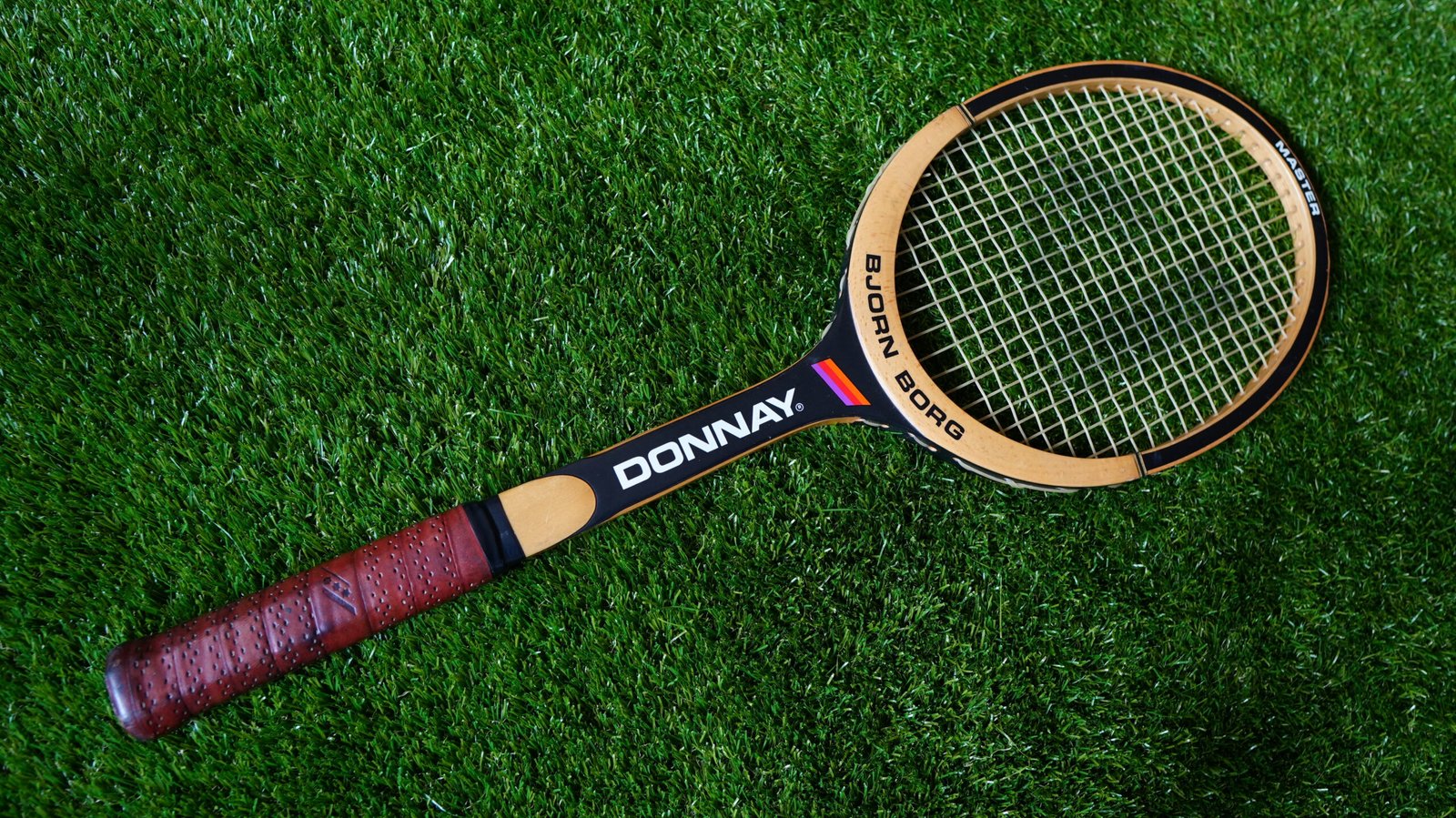Condition 8
10: New
9: Mint
8: Excellent
7: Good
6: Fair
5: Average
4: Below Average
3: Poor | Rarity 7
10: Impossibly rare
9: Extremely rare
8: Hard to find
7: Fairly rare
6: Uncommon
5: Common
<4: Big Seller
9: Mint
8: Excellent
7: Good
6: Fair
5: Average
4: Below Average
3: Poor
9: Extremely rare
8: Hard to find
7: Fairly rare
6: Uncommon
5: Common
<4: Big Seller
– – – – – – – – – – –
About The Bjorn Borg Master
Following Donnay’s huge success with sponsorship of Bjorn Borg they began to make more Borg variants. The big seller was the allwood, which likely just carried the Bjorg name on its existing design. Then there was the high end Borg Personal. The Borg Master was a slightly less common and lmore economical variant which neverthess had a stunning design which was arguably as good or better than the allwood (in design not quality).
A copy of an advert from the time is shown below, the price of the Borg Master was £30, compared with Dunlop 150g 65, and £38 for Maxply Fort with Nylon strings, and £50 for Maxply Graphite and Slazenger Royal Crown at only £9!
Specifications
| Measurements | Value | Performance | Score |
|---|---|---|---|
| Weight | 370g | Power | 10/100 |
| Length | 27inch | Control | 44/100 |
| Balance | 5pt head heavy | Spin | 33/100 |
| Grip | Perforated leather | Handling | 73/100 |
| Strings | 18 x 20 | synthetic | Comfort | 87/100 |
| Flexibility | RA 45 | Consistency | 44/100 |
About Donnay
In the tennis world, Donnay is a legendary name. Originating in 1910, Emile Donnay founded a woodworking company in Couvin, Belgium. By 1913, they began manufacturing tennis rackets, moving to new premises in 1927. In 1934, they launched their first wooden racket, establishing a reputation throughout the 1930s and 1940s.Donnay’s major breakthrough came in the 1950s with a Wilson manufacturing deal, producing 1.3 million of their two million annual rackets. By 1969, Donnay was the world’s largest racket maker, favored by top players like Rod Laver. Their peak was in 1975 with Björn Borg, who dominated tennis using Donnay rackets until 1983. Iconic models like the Donnay Borg Pro and Allwood emerged during this era. Borg’s departure in 1983 led to a decline, culminating in bankruptcy by 1988 with $35 million in debt. Bernard Tapie’s acquisition saw a brief revival with Andre Agassi from 1989 to 1992, highlighted by Agassi’s 1992 Wimbledon win with a Donnay Pro One. Despite this, financial woes persisted, and today, Donnay is a low-cost clothing brand at Sports Direct. Its legacy, however, remains impactful in tennis history, showcasing the rapid shifts in sports technology.
Gallery
Donnay by Time
| Year | Key Event |
|---|---|
| 1885 | Emile Donnay is born |
| 1910 | Emile Donnay founds a woodworking company in Couvin, Belgium |
| 1913 | Donnay starts a side business manufacturing broomsticks for the coal mining industry |
| 1927 | New premises constructed in Couvin |
| 1934 | Donnay produces its first wooden tennis racket made from ash |
| 1950 | Donnay secures a deal to manufacture rackets for Wilson |
| 1969 | Donnay starts signing more players to lucrative sponsorships |
| 1971 | Donnay’ sales top 1 million per year |
| 1973 | Wilson Sporting Goods drops Donnay as its contract tennis racket manufacturer |
| 1974 | Björn Borg wins his first Grand Slam at the French Open |
| 1975 | Donnay signs Björn Borg |
| 1978 | The Donnay Borg Pro racket, designed for Björn Borg becomes the biggest seller |
| 1980 | Donnay manufactures just 3,000 graphite rackets against 1.8 million wooden rackets |
| 1981 | Donnay produces the most racquets in the world |
| 1983 | Björn Borg suddenly retires from tennis |
| 1984 | Donnay continues producing wooden rackets until this year |
| 1987 | Donnay hires its first marketing manager |
| 1988 | Donnay declares bankruptcy with $35 million of debt |
| 1989 | Andre Agassi is signed by Donnay |
| 1992 | Andre Agassi wins Wimbledon using a Donnay Pro One racket |
| 2001 | Donnay is acquired by Babolat |







